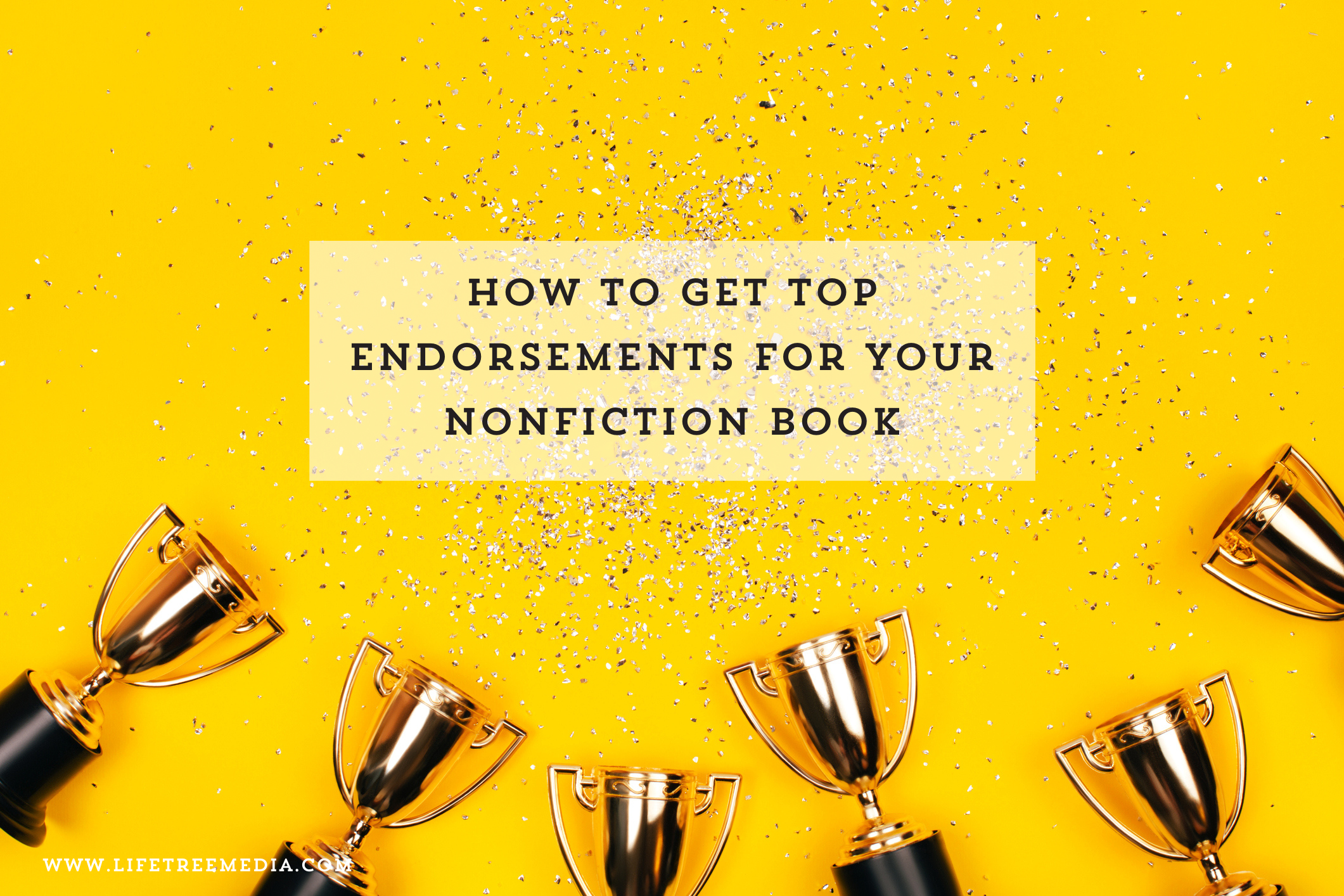
To attract the attention of new readers and booksellers, it helps to have the endorsement of relevant, high-profile people that the reader already knows and trusts. So, how do you get those endorsements? You’re going to reach out to experts, published authors, and influential people in your network to ask them to support your book with what is generally known as a “blurb” or “advance praise” in the book publishing industry. Advance praise can be immensely helpful in attracting instant credibility.
What you’ll do is ask potential endorsers whether they’d be willing to read your book and give you a brief endorsement to use in the book or on its cover. Here’s what you need to know about how to do this.
Who should you reach out to?
- High-profile authors (their book doesn’t have to be on the same topic as yours, but it should be relevant and have appeal to the same audience)
- High-profile executives (C-suite level, founders, etc.) who are relevant to your book and / or your audience
- Celebrities relevant to your audience
- Any members of the media who you are in personal contact with. NOTE: This is not the time to ask journalists to review the book because soliciting endorsements is not part of a media campaign. Sometimes media venues will decline to review a book after it’s published if one of their journalists has provided an endorsement. Instead, this is a good time to leverage any existing relationships you might have with reporters or on-air personalities. Sometimes the life of a media personality does connect with the content of a book. In that case, soliciting an endorsement can make sense.
How do you connect with them?
- Best: Through personal introduction, if possible
- Through their website / contact form
- Google search for their personal or professional email address
- Through their literary agent or publisher
- On social media. This is hit-and-miss, but can be worth a shot.
When should you approach endorsers and when should they send in their blurbs?
Start putting out feelers early. This can be done while you’re still writing or when your manuscript is going through a substantive edit. If your potential endorser agrees to provide a blurb early on, send them a “save the date” email so they know when the book is ready for them to read for endorsement. Give people enough time to read the book, but not so much time that they procrastinate or forget about doing it. A two to three-week deadline is ideal.
What are you asking them to send you?
Essentially, you are asking your endorsers to send you one or two sentences of praise for your book. Short and sweet is best! Here are a couple of examples from LifeTree books.
“An elegant, wise book of love in action.”—Deepak Chopra
“Required reading for anyone who runs a store (or shops).”—Seth Godin, author of This is Marketing
“The first book to show us how making better use of existing talent is a huge opportunity for employers.”—Peter Cappelli, PhD, Professor of Management, The Wharton School
“This book paves the way for parenting that is connected, rewarding, and meaningful.”—Tina Payne Bryson, PhD, coauthor of The Whole-Brain Child
What should you send your potential endorsers to read?
Share a PDF of the designed book pages with your potential endorsers. If the designed pages aren’t ready for sharing yet, and the endorser cannot wait for them due to their own schedule, you may offer to send them a PDF or a hard copy of the manuscript pages. You can always follow up with layouts later.
General issues to keep in mind when soliciting endorsements:
- Usually the front cover of a book will include one short quote from your most recognizable and powerful endorser. The back cover generally contains about three to four endorsements.
- Endorsements should not repeat the cover copy, which describes the content of the book. Instead, endorsements should praise the originality, importance, and freshness of your material and support your work and efforts.
- Ideally, blurbs should be evenly balanced in their content. Sometimes they can sound too much alike so you will need to keep an eye out for repeated phrases or words.
- Occasionally you will receive a blurb that is weak. That can be problematic if the endorser is someone you know well or respect and you choose not to include the endorsement on the final cover. To get around that, endorsements can appear on a praise page in the front of the book or they can be used in online marketing.
- Finally, it’s a good idea to ask your endorsers if they are amenable to editorial changes for reasons of length and readability (not content). Often endorsements are shortened or edited particularly for marketing purposes or even on the book cover where space is limited.
To receive more book marketing and publishing advice, sign up to our mailing list here.
- How to Nail Social Media as a New Author - September 11, 2020
- A Nonfiction Author’s Guide to Citation Notes and Bibliographies - September 1, 2020
- How to Boost Your Author Platform with Content Marketing - August 20, 2020